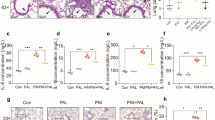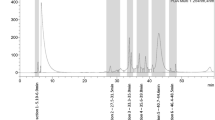Abstract
Gallic acid (GA) is generally distributed in a variety of plants and foods, and its various biological effects have been reported. Here, we investigated the effects of GA and/or caspase inhibitors on Calu-6 and A549 lung cancer cells in relation to cell death and reactive oxygen species (ROS). The growths of Calu-6 and A549 cells were diminished with an IC50 of approximately 30 and 150 μM GA at 24 h, respectively. GA also inhibited the growth of primary human pulmonary fibroblast (HPF) cells with an IC50 of about 300 μM. GA induced apoptosis and/or necrosis in lung cancer cells, which was accompanied by the loss of mitochondrial membrane potential (MMP, ΔΨm). The percents of MMP (ΔΨm) loss and death cells by GA were lower in A549 cells than in Calu-6 cells. Caspase inhibitors did not significantly rescued lung cancer cells from GA-induced cell death. GA increased ROS levels including O2 •− and induced GSH depletion in both lung cancer cells. Z-VAD (pan-caspase inhibitor) did not decrease ROS levels and GSH depleted cell number in GA-treated lung cancer cells. In conclusion, GA inhibited the growth of lung cancer and normal cells. GA-induced lung cancer cell death was accompanied by ROS increase and GSH depletion.






Similar content being viewed by others
Abbreviations
- GA:
-
Gallic acid
- HPF:
-
Human pulmonary fibroblast
- ROS:
-
Reactive oxygen species
- MMP (ΔΨm):
-
Mitochondrial membrane potential
- FBS:
-
Fetal bovine serum
- MTT:
-
3-(4,5-Dimethylthiazol-2-yl)-2,5-diphenyltetrazolium bromide
- PI:
-
Propidium iodide
- FITC:
-
Fluorescein isothiocyanate
- Z-VAD-FMK:
-
Benzyloxycarbonyl-Val-Ala-Asp-fluoromethylketone
- Z-DEVD-FMK:
-
Benzyloxycarbonyl-Asp-Glu-Val-Asp-fluoromethylketone
- Z-IETD-FMK:
-
Benzyloxycarbonyl-Ile-Glu-Thr-Asp-fluoromethylketone
- Z-LEHD-FMK:
-
Benzyloxycarbonyl-Leu-Glu-His-Asp-fluoromethylketone
- H2DCFDA:
-
2′,7′-Dichlorodihydrofluorescein diacetate
- DHE:
-
Dihydroethidium
- GSH:
-
Glutathione
- CMFDA:
-
5-Chloromethylfluorescein diacetate
References
Niemetz R, Gross GG (2005) Enzymology of gallotannin and ellagitannin biosynthesis. Phytochemistry 66:2001–2011
Chu YF, Sun J, Wu X, Liu RH (2002) Antioxidant and antiproliferative activities of common vegetables. J Agric Food Chem 50:6910–6916
Wolfe K, Wu X, Liu RH (2003) Antioxidant activity of apple peels. J Agric Food Chem 51:609–614
Shahrzad S, Aoyagi K, Winter A, Koyama A, Bitsch I (2001) Pharmacokinetics of gallic acid and its relative bioavailability from tea in healthy humans. J Nutr 131:1207–1210
Manach C, Williamson G, Morand C, Scalbert A, Remesy C (2005) Bioavailability and bioefficacy of polyphenols in humans. I. Review of 97 bioavailability studies. Am J Clin Nutr 81:230S–242S
Kang MS, Oh JS, Kang IC, Hong SJ, Choi CH (2008) Inhibitory effect of methyl gallate and gallic acid on oral bacteria. J Microbiol 46:744–750
Kratz JM, Andrighetti-Frohner CR, Leal PC, Nunes RJ, Yunes RA, Trybala E, Bergstrom T, Barardi CR, Simoes CM (2008) Evaluation of anti-HSV-2 activity of gallic acid and pentyl gallate. Biol Pharm Bull 31:903–907
Kim SH, Jun CD, Suk K, Choi BJ, Lim H, Park S, Lee SH, Shin HY, Kim DK, Shin TY (2006) Gallic acid inhibits histamine release and pro-inflammatory cytokine production in mast cells. Toxicol Sci 91:123–131
Inoue M, Sakaguchi N, Isuzugawa K, Tani H, Ogihara Y (2000) Role of reactive oxygen species in gallic acid-induced apoptosis. Biol Pharm Bull 23:1153–1157
Kaur M, Velmurugan B, Rajamanickam S, Agarwal R, Agarwal C (2009) Gallic acid, an active constituent of grape seed extract, exhibits anti-proliferative, pro-apoptotic and anti-tumorigenic effects against prostate carcinoma xenograft growth in nude mice. Pharm Res 26:2133–2140
Agarwal C, Tyagi A, Agarwal R (2006) Gallic acid causes inactivating phosphorylation of cdc25A/cdc25C-cdc2 via ATM-Chk2 activation, leading to cell cycle arrest, and induces apoptosis in human prostate carcinoma DU145 cells. Mol Cancer Ther 5:3294–3302
Veluri R, Singh RP, Liu Z, Thompson JA, Agarwal R, Agarwal C (2006) Fractionation of grape seed extract and identification of gallic acid as one of the major active constituents causing growth inhibition and apoptotic death of DU145 human prostate carcinoma cells. Carcinogenesis 27:1445–1453
Kawada M, Ohno Y, Ri Y, Ikoma T, Yuugetu H, Asai T, Watanabe M, Yasuda N, Akao S, Takemura G, Minatoguchi S, Gotoh K, Fujiwara H, Fukuda K (2001) Anti-tumor effect of gallic acid on LL-2 lung cancer cells transplanted in mice. Anticancer Drugs 12:847–852
Ohno Y, Fukuda K, Takemura G, Toyota M, Watanabe M, Yasuda N, Xinbin Q, Maruyama R, Akao S, Gotou K, Fujiwara T, Fujiwara H (1999) Induction of apoptosis by gallic acid in lung cancer cells. Anticancer Drugs 10:845–851
You BR, Park WH (2010) Gallic acid-induced lung cancer cell death is related to glutathione depletion as well as reactive oxygen species increase. Toxicol In Vitro 24:1356–1362
Faried A, Kurnia D, Faried LS, Usman N, Miyazaki T, Kato H, Kuwano H (2007) Anticancer effects of gallic acid isolated from Indonesian herbal medicine, Phaleria macrocarpa (Scheff.) Boerl, on human cancer cell lines. Int J Oncol 30:605–613
You BR, Moon HJ, Han YH, Park WH (2010) Gallic acid inhibits the growth of HeLa cervical cancer cells via apoptosis and/or necrosis. Food Chem Toxicol 48:1334–1340
Serrano A, Palacios C, Roy G, Cespon C, Villar ML, Nocito M, Gonzalez-Porque P (1998) Derivatives of gallic acid induce apoptosis in tumoral cell lines and inhibit lymphocyte proliferation. Arch Biochem Biophys 350:49–54
Inoue M, Suzuki R, Koide T, Sakaguchi N, Ogihara Y, Yabu Y (1994) Antioxidant, gallic acid, induces apoptosis in HL-60RG cells. Biochem Biophys Res Commun 204:898–904
Inoue M, Suzuki R, Sakaguchi N, Li Z, Takeda T, Ogihara Y, Jiang BY, Chen Y (1995) Selective induction of cell death in cancer cells by gallic acid. Biol Pharm Bull 18:1526–1530
Sohi KK, Mittal N, Hundal MK, Khanduja KL (2003) Gallic acid, an antioxidant, exhibits antiapoptotic potential in normal human lymphocytes: A Bcl-2 independent mechanism. J Nutr Sci Vitaminol (Tokyo) 49:221–227
Sameermahmood Z, Raji L, Saravanan T, Vaidya A, Mohan V, Balasubramanyam M (2009) Gallic acid protects RINm5F beta-cells from glucolipotoxicity by its antiapoptotic and insulin-secretagogue actions. Phytother Res 24:S83–S94
Petty RD, Nicolson MC, Kerr KM, Collie-Duguid E, Murray GI (2004) Gene expression profiling in non-small cell lung cancer: from molecular mechanisms to clinical application. Clin Cancer Res 10:3237–3248
Park WH, Seol JG, Kim ES, Hyun JM, Jung CW, Lee CC, Kim BK, Lee YY (2000) Arsenic trioxide-mediated growth inhibition in MC/CAR myeloma cells via cell cycle arrest in association with induction of cyclin-dependent kinase inhibitor, p21, and apoptosis. Cancer Res 60:3065–3071
Han YH, Kim SZ, Kim SH, Park WH (2007) Arsenic trioxide inhibits growth of As4.1 juxtaglomerular cells via cell cycle arrest and caspase-independent apoptosis. Am J Physiol Renal Physiol 293:F511–F520
Han YH, Kim SH, Kim SZ, Park WH (2008) Caspase inhibitor decreases apoptosis in pyrogallol-treated lung cancer Calu-6 cells via the prevention of GSH depletion. Int J Oncol 33:1099–1105
Chen HM, Wu YC, Chia YC, Chang FR, Hsu HK, Hsieh YC, Chen CC, Yuan SS (2009) Gallic acid, a major component of Toona sinensis leaf extracts, contains a ROS-mediated anti-cancer activity in human prostate cancer cells. Cancer Lett 286:161–171
Isuzugawa K, Inoue M, Ogihara Y (2001) Catalase contents in cells determine sensitivity to the apoptosis inducer gallic acid. Biol Pharm Bull 24:1022–1026
Poot M, Teubert H, Rabinovitch PS, Kavanagh TJ (1995) De novo synthesis of glutathione is required for both entry into and progression through the cell cycle. J Cell Physiol 163:555–560
Schnelldorfer T, Gansauge S, Gansauge F, Schlosser S, Beger HG, Nussler AK (2000) Glutathione depletion causes cell growth inhibition and enhanced apoptosis in pancreatic cancer cells. Cancer 89:1440–1447
Acknowledgments
This study was supported by a grant from the Ministry of Science & Technology (MoST)/Korea Science & Engineering Foundation (KOSEF) through the Diabetes Research Center at Chonbuk National University (2010-0029497) and the National Research Foundation of Korea Grant funded by the Korean Government (MEST) (2010-0021808).
Conflict of interest
None.
Author information
Authors and Affiliations
Corresponding author
Electronic supplementary material
Below is the link to the electronic supplementary material.
Rights and permissions
About this article
Cite this article
You, B.R., Kim, S.Z., Kim, S.H. et al. Gallic acid-induced lung cancer cell death is accompanied by ROS increase and glutathione depletion. Mol Cell Biochem 357, 295–303 (2011). https://doi.org/10.1007/s11010-011-0900-8
Received:
Accepted:
Published:
Issue Date:
DOI: https://doi.org/10.1007/s11010-011-0900-8




